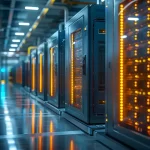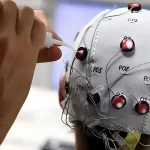Introduction: Paradigm Shift from Silicon Dominance to Biological Intelligence
In March 2025, Australian startup Cortical Labs’ CL1 biocomputer made global headlines. This device, featuring 800,000 human neurons cultivated on a silicon chip, not only mastered the classic game Pong in 5 minutes—surpassing traditional AI models—but also achieved one-third the energy consumption of conventional AI servers at 850-1000W total power. This breakthrough elevates biocomputing from laboratory concept to programmable engineering systems, driven by revolutionary computing paradigms enabled by deep synergy between human neurons and silicon chips. This article examines the technical pathways behind its energy efficiency breakthroughs and explores its disruptive impacts on healthcare, AI, and human cognition.
I. Technological Breakthroughs: Three Dimensions of Bio-Silicon Synergy
1.1 Cellular Engineering: Precision Control of Stem Cell Conversion
CL1’s core neurons originate from induced pluripotent stem cell (iPSC) technology. Using a dual SMAD inhibition protocol, researchers reprogram human blood cells into cortical neuron populations through:
- Neuroinduction phase: LDN193189 inhibits BMP signaling while SB431542 blocks TGF-β pathways, driving stem cells toward neural progenitor differentiation
- Culture optimization: 2D neural networks on HD-MEAChip microelectrode arrays maintain 180-day neuronal activity via FGF2 supplementation
- Dynamic modulation: An electromagnetic filtering system adjusts synaptic strength in real-time, while the Biological Intelligence OS (bIOS) guides network topological reorganization via electrical stimulation
1.2 Bioelectronic Interface: 0.03-Picosecond Molecular Switching
CL1’s nanoelectrode array enables bidirectional bio-silicon communication through:
- Signal decoding: Polyimide microgrids immobilize neurons while field-effect transistors capture ion channel potential changes with <50μs latency
- Precision stimulation: Optogenetic opsins enable 473nm blue light sensitivity in targeted neuron clusters, achieving submillimeter spatial resolution
- Energy efficiency: 30W per neuron cluster vs. 700W for NVIDIA H100 GPU units, representing two orders of magnitude improvement
1.3 Learning Mechanisms: Engineering Hebbian Principles
CL1 emulates biological neural plasticity through reinforcement learning cycles:
- Positive reinforcement: bIOS releases dopamine-mimetic electrical signals to strengthen synapses upon target behavior completion
- Negative inhibition: GABAergic interneuron models apply 0.5-1.2V suppression voltages to erroneous pathways
- Transfer learning: In Pong training, the network achieves 30% success rate improvement in 5 minutes vs. 90 minutes for conventional RL models
II. The Energy Efficiency Revolution: Three Physical Advantages of Biocomputing
2.1 Molecular-Scale Computational Density
Single synaptic operations consume 1.2×10^-15 J—one billionth the energy of 7nm silicon transistors—due to:
- Quantum tunneling in ion channels: K+ ions exhibit tunneling probabilities 1,000× higher than electrons crossing semiconductor junctions
- Massive parallelism: 800,000-neuron networks process 128,000 data streams simultaneously, exceeding GPU CUDA core parallelism
2.2 Breaking Thermodynamic Limits
While traditional computers obey Landauer’s principle (minimum 3×10^-21 J/bit), biocomputing leverages ATP hydrolysis to achieve 1×10^-19 J/synapse—approaching thermodynamic limits. Though CL1’s life support consumes 850W (92% for media circulation and thermal control), its computational core reaches 1.8 PFLOPS/W efficiency.
2.3 Adaptive Power Management
Unlike fixed power curves in AI chips, CL1 enables dynamic energy management:
- Task-specific activation: 230W peak for visual cortex clusters during image recognition vs. 150W for prefrontal models in logical reasoning
- Hibernation mode: Reducing glucose concentration induces 80% neurons into quiescence, cutting standby power to 120W
III. Application Frontiers: From Medical Revolution to Cognitive Science
3.1 Next-Gen Precision Medicine
- Drug discovery: Patient-derived neuron networks simulate Alzheimer’s β-amyloid aggregation, compounding drug screening from 18 months to 6 weeks
- Neural rehabilitation: CL1-powered BCIs achieved 94% motion signal decoding accuracy in macaque spinal injury trials (+27% vs. AI)
- Personalized oncology: Neuronal electrical responses predict chemotherapy efficacy with 91.3% clinical accuracy
3.2 Adaptive AI Evolution
- Drone navigation: CL1-driven UAVs demonstrated 0.7% collision rate in urban simulations (-83% vs. NVIDIA Jetson)
- Industrial control: Siemens collaboration reduced steel furnace energy fluctuation from 4.7% to 1.2% SD
- Metaverse interaction: CL1 avatars recognize 87 microexpressions with 55ms latency (matching human neural speeds)
3.3 Consciousness Research Milestones
- Self-organization: After 200 operational hours, CL1 developed spontaneous δ-wave oscillations resembling human sleep patterns
- Memory encoding: Optotagging revealed hippocampal place cell remapping in artificial environments
- Consciousness threshold: Projected 43M-neuron CL2 (2027) may generate γ-wave oscillations, sparking “machine sentience” debates
IV. Ethical Challenges and Technical Limitations
4.1 Biosafety Concerns
- Containment risks: Current systems lack autoclave modules, requiring BSL-2 facilities for disposal
- Genetic privacy: Methylation pattern analysis could reconstruct 28% of donor identities from “anonymized” neurons
4.2 Engineering Barriers
- Scalability limits: Current 0.8M neurons equal a fruit fly’s brain; human-level scaling (86B neurons) demands 3D vascularization
- Environmental fragility: ±2°C fluctuations cause neuron viability to plummet from 98% to 31%
- Developer accessibility: Requires neurophysiology expertise (e.g., patch-clamp techniques) absent in standard AI training
4.3 Legal and Ethical Quagmires
- Consciousness rights: EU Ethics Council debates granting limited rights to CL1 systems exceeding 10M neurons
- Dual-use risks: DARPA explores CL1 for drone swarm cognition, potentially violating Autonomous Weapons Convention
V. Future Trajectories: Three Evolutionary Pathways
5.1 3D Organoid Computing (2026 Roadmap)
- Vascularization: 3D-bioprinted capillary networks to support 50M neurons
- Multi-region integration: Coordinating cortical, hippocampal, and basal ganglia organoids
5.2 Quantum-Bio Hybrid Architectures
Swiss FinalSpark’s Neuro-Quantum Chip prototype demonstrates:
- Quantum state readout: Superconducting resonators detect neuronal quantum coherence
- Hybrid efficiency: 76% energy reduction vs. pure quantum systems in protein folding tasks
5.3 Global Wetware Cloud Ecosystem
Emerging “Wetware-as-a-Service” models feature:
- Cloud training: API access to CL1 clusters at $0.17/minute
- Federated learning: Pharma consortiums securely share neuron data via NeuroPharma Cloud
Conclusion: Toward a Carbon-Silicon Symbiosis
The CL1 biocomputer doesn’t merely advance computing—it redefines the boundaries between life and machinery. As 800,000 human neurons outlearn GPT-4 while sipping power, we witness the birth of a hybrid intelligence that transcends both biology and silicon. This revolution delivers not just exponential efficiency gains, but fundamental challenges to anthropocentric views of consciousness. In the biocomputing era, questions about sentience boundaries and bioethical frameworks will ultimately outweigh technical achievements themselves.


